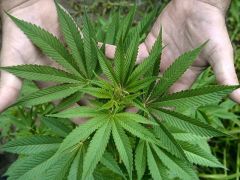“Cannabidiol, the main nonpsychotropic constituent of Cannabis sativa, possesses a large number of pharmacological effects including anticonvulsive, sedative, hypnotic, anxiolytic, antipsychotic, anti-inflammatory, and neuroprotective, as demonstrated in clinical and preclinical studies.
Many neurodegenerative disorders involve cognitive deficits, and this has led to interest in whether cannabidiol could be useful in the treatment of memory impairment associated to these diseases…
We used an animal model of cognitive impairment induced by iron overload in order to test the effects of cannabidiol in memory-impaired rats…
RESULTS:
A single acute injection of cannabidiol at the highest dose was able to recover memory in iron-treated rats. Chronic cannabidiol improved recognition memory in iron-treated rats. Acute or chronic cannabidiol does not affect memory in control rats.
CONCLUSIONS:
The present findings provide evidence suggesting the potential use of cannabidiol for the treatment of cognitive decline associated with neurodegenerative disorders.
Further studies, including clinical trials, are warranted to determine the usefulness of cannabidiol in humans suffering from neurodegenerative disorders.”
http://www.ncbi.nlm.nih.gov/pubmed/21870037


 9-tetrahydrocannabinol (
9-tetrahydrocannabinol (